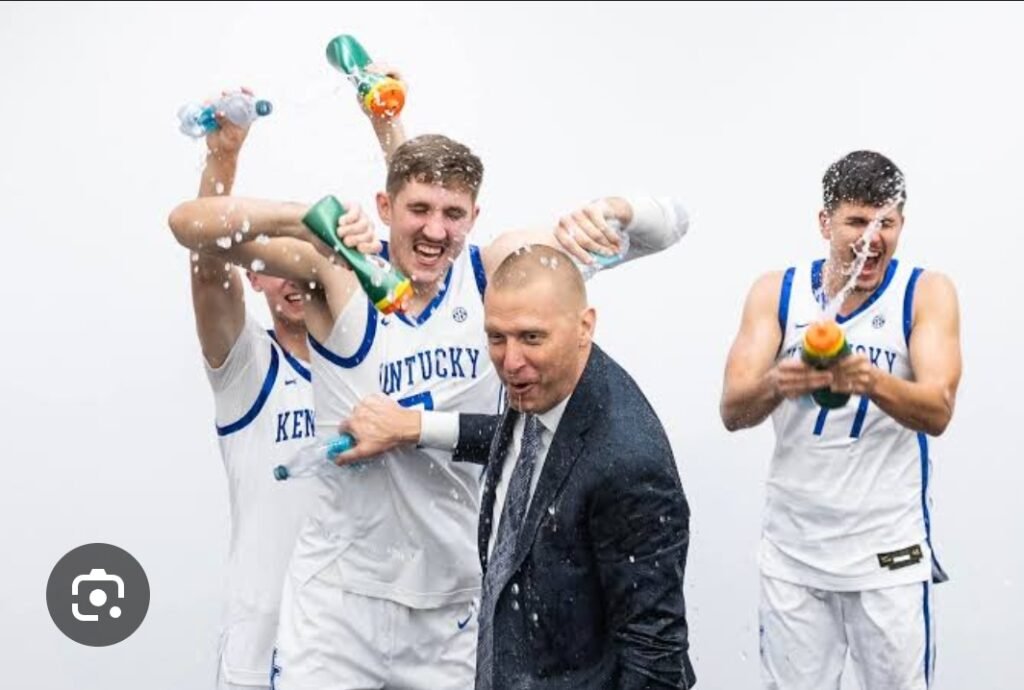When Mark Pope was hired as head coach of the Kentucky Wildcats, the basketball world braced itself for a transformation. His reputation for prioritizing the three-point shot, honed during his tenure at BYU, indicated a bold shift from the traditional, hard-nosed style that Kentucky had long been known for under coaches like John Calipari. Pope’s vision was clear: he wanted his team to shoot the three ball early, often, and with confidence. This philosophy was to be the foundation of his Kentucky program, and as the 2024-2025 season unfolded, it became evident that Pope’s Wildcats were embracing this new identity with surprising success.
From the outset, the Wildcats have been on a mission to break records and rewrite Kentucky basketball’s approach to scoring. As of midseason, Kentucky is averaging close to 30 three-point attempts per game—a figure that would have been unthinkable in years past. It’s a departure from the team’s usual emphasis on size and post play, and instead, Pope has built a squad that relies heavily on spacing, ball movement, and shooting from deep. And remarkably, this shift is paying off in ways few predicted.
Kentucky has yet to lose a game this season when they hit at least 12 three-pointers. This stat is crucial—it not only demonstrates Pope’s philosophy in action but also highlights the team’s ability to adapt to modern basketball trends. The Wildcats’ reliance on the three-point shot is not merely about volume; it’s about efficiency. When they are hitting their deep shots, they are nearly unstoppable. The floor opens up for explosive guards to drive, their big men can space the floor for open looks, and the defense is constantly on edge, knowing that any given possession could end with a contested three-pointer swishing through the net.
However, this new approach is not without controversy. Critics argue that Pope is compromising the traditional identity of Kentucky basketball. The Wildcats, historically known for dominating the paint and imposing their will on opponents, now seem content to settle for long-range shots. Some see this as a betrayal of the program’s storied history, which has long been rooted in physicality and power. Kentucky fans, for decades accustomed to watching dominant inside play from the likes of Anthony Davis or Nerlens Noel, now find themselves watching a team whose success hinges on perimeter shooting.
Yet, in today’s game, the three-pointer is no longer just a luxury—it’s a necessity. Teams like Golden State have proven that shooting a high volume of three-pointers is not just a trendy gimmick but a legitimate way to build an elite offense. Pope seems to understand this, and while the Wildcats’ approach may seem at odds with the past, it could be a harbinger of future success in college basketball, where the evolution of the game is moving away from traditional post play and toward perimeter shooting.
Moreover, it’s important to acknowledge the challenges Kentucky faces in this new era. The team has struggled at times with consistency from beyond the arc. When the shots aren’t falling, the offense can stagnate, and the Wildcats have been prone to lengthy scoring droughts. This is an inherent risk with a three-point heavy system—shooting variance can make or break a game. Critics are quick to point out these instances, warning that Pope’s system might not be sustainable in the long run, especially in high-pressure tournament settings.
But for now, Pope’s bold gamble is paying off. Kentucky remains undefeated when they exceed that magic 12 three-pointer threshold. The Wildcats are showing that in the modern game, innovation and adaptation can lead to greatness—even in the face of a proud program’s traditions. Whether Mark Pope’s Kentucky Wildcats can continue this impressive run remains to be seen, but for now, one thing is clear: the three-point shot is the heart and soul of this team.

